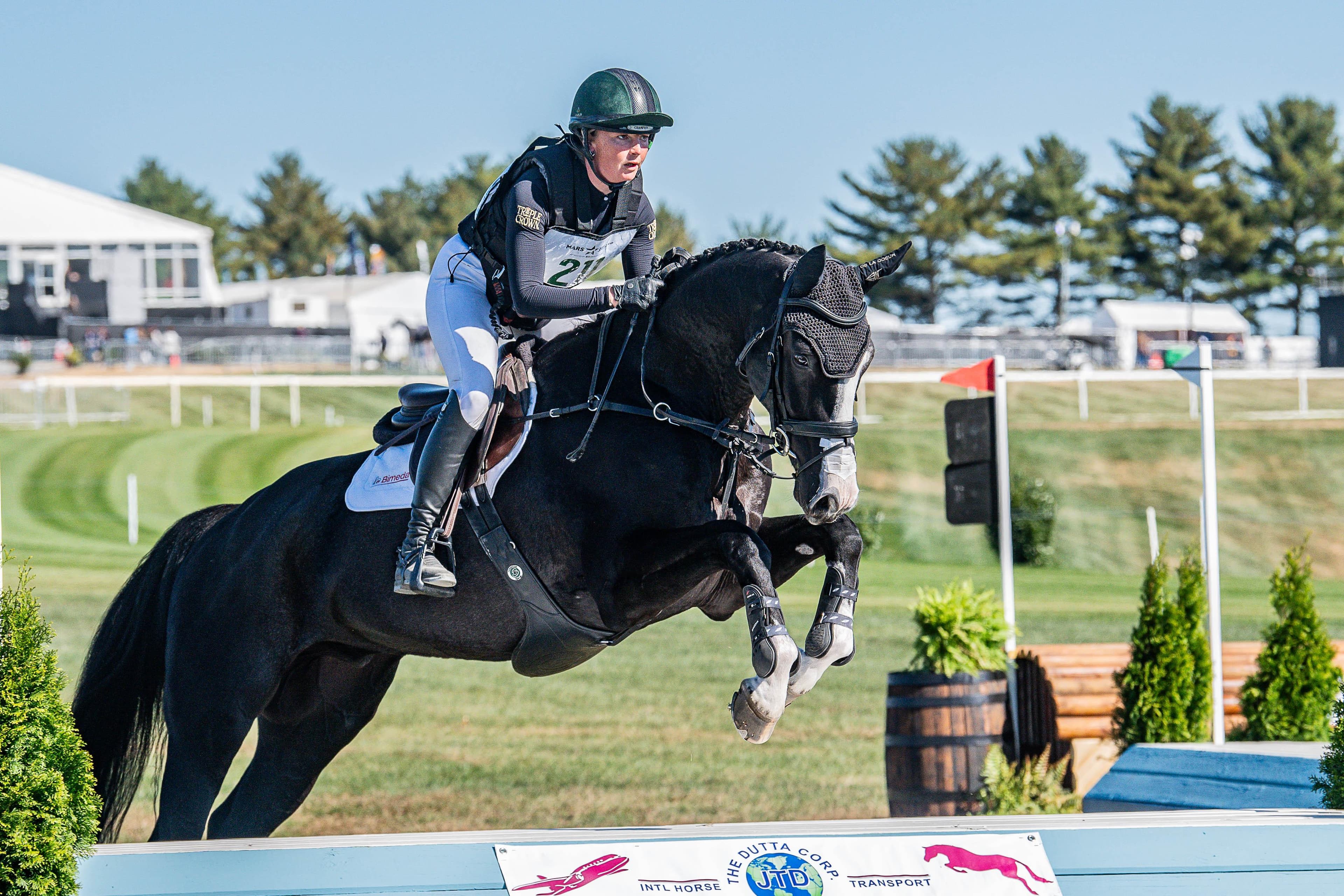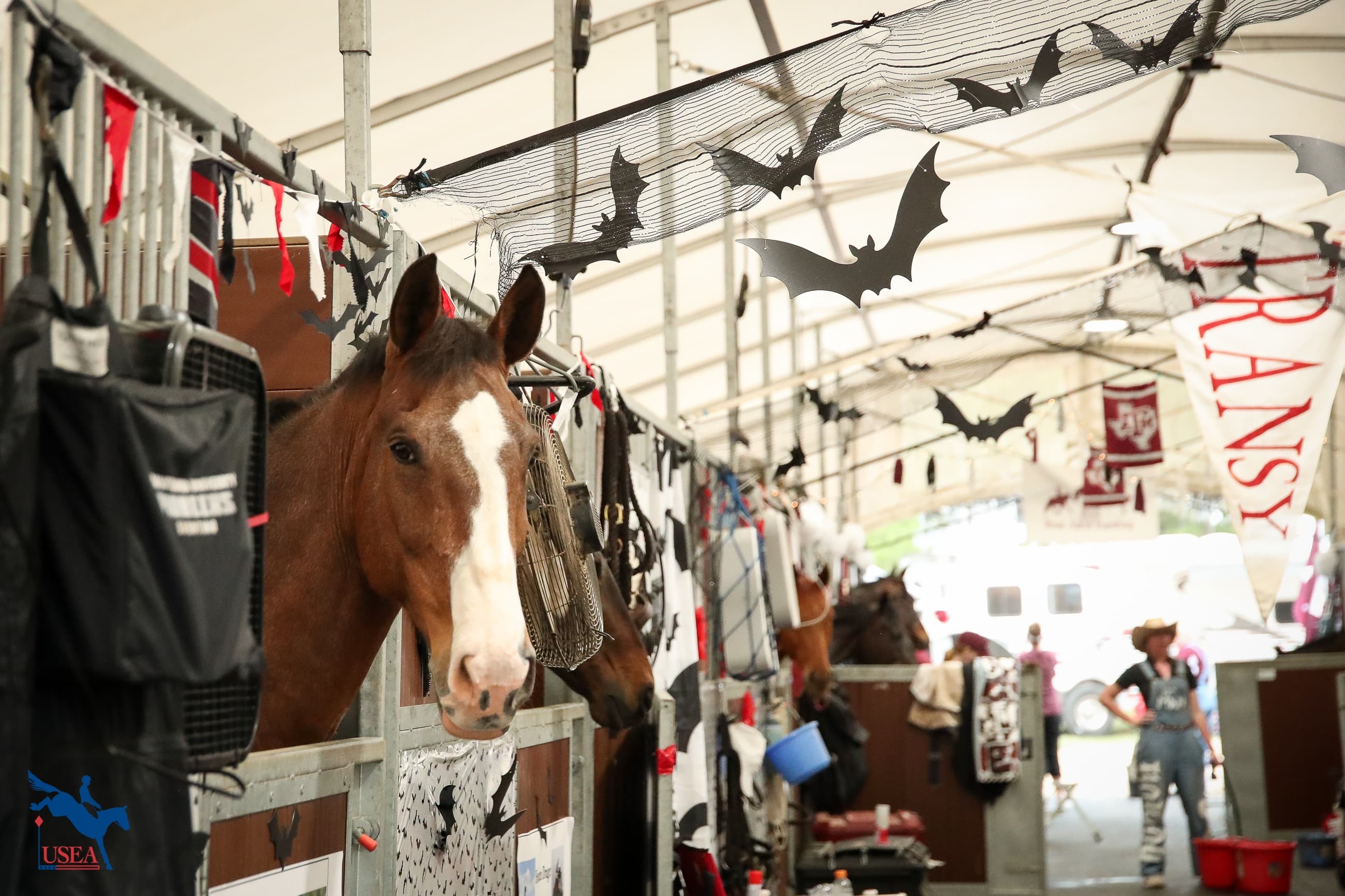Many people are wondering, "What is the new rule for frangible fences and how will it affect me?" We are all looking for ways to make our sport safer and this is a way the USEF and USEA are moving toward safer competitions.
In the USEF Rules For Eventing, EV 140, line 8, the rule concerning frangible jumps reads:
“Obstacles constructed after December 1, 2008, for which approved frangible technology is appropriate, shall be constructed using this technology. Obstacles constructed prior to December 1, 2008 and for which the use of approved frangible technology is appropriate shall be retrofit using this technology prior to December 1, 2009. All open oxers at the Preliminary level and above must be constructed using approved frangible technology. Information on the appropriate applications of frangible technology in cross-country fence construction is available in the USEA Cross-Country Obstacle Design Guidelines. Frangible Technology may be installed only by or under the supervision of Course Designers/ Course Builders who have attended a USEA Seminar on frangible fence construction.”
This is pretty easy to understand, but I’ll paraphrase and elaborate. From now on, all new jumps (Prelim and up) that should be frangible, must be frangible. And existing jumps (Prelim and up) that should be, must be converted before next year (2010 season).
So, which ones should be frangible? The rule specifically references the “Guidelines” as the source for mandated situations for frangible jumps. The latest edition of the “Guidelines” lists: 1. Bounces (both elements), 2. Coffins, 3. Sunken Roads, 4. Open Oxers, 5. Triple Bars, 6. Open Corners. However, the pin hardware can only be used within the following limitations: the size of the rail doesn’t exceed 16 feet long, and 15 inches in diameter, and 550 pounds, so jumps with bigger, longer, or heavier rails are exempt. Open oxers are specifically mentioned in the rule. They must be built frangible or converted. The recommendation is that at least the back rail be pinned, both front and back would be better.
When the frangible pin was first introduced here in 2003, the plan was for all possible fences to be frangible by 2007. That was revised as we had trouble establishing a reliable supplier here in the U.S. Since the pins are now readily available, we have gone back to requiring the use of the pins. The original intent and language concerning frangible fences was that the pin system be installed in all fences that were within the weight and size limitations. This has been the rule in England for several years. The language of our current rule leaves us guided by the “Guidelines”. We are required to make those mentioned jumps frangible, but we encourage the wide-spread use of frangible technology. The Course Designers and Event Organizers have the flexibility to make the decisions on using frangibles beyond those required. The “Guidelines” is an adaptable document that is revised on a regular basis. These requirements may change over time as the sport evolves, new research is published or new technology comes into play.
So, again, the intention is that all rail fences be converted to frangible, but it is required only in certain situations. For example, if you have an open corner made from telephone poles on your Intermediate course, it needs to be converted to frangible or covered in. If you have rail fences in and out of your Advanced Coffin complex, they need to be converted to frangible. If you have a triple rail vertical fence on your Preliminary course, it must be converted to frangible. If you have a pole over a flower bed, it should be, but is not required to be converted. On the other hand, if you have a bounce made from 3’ diameter logs, they are fine as is. If you have a trakehner log on H-frames, that’s fine. If you have a pole filled under with rocks, it’s OK. And none of the Beginner Novice, Novice, or Training jumps need to be converted to frangible. Understand? The whole idea is to make our courses safer. The frangible pin only works on rails, so if we have rail fences on our courses, we should make them frangible.
What about the new foam logs, pro-logs? Are they considered frangible? This is debatable. My feeling is yes, but the final decision lies with your Technical Delegate. This was discussed in the Designers/Builders Committee meeting and with David O’Connor. He believes they should be considered frangible and has used them on his courses. They have been tested for this reaction by the University of Kentucky and are manufactured to strict standards of consistency. Like the frangible pins, they must be installed correctly to work: the main thing being room to fall at least 16 inches vertically after breaking. One of the nice things about the pro-log is that it presents a bigger face. It is about 18 inches in diameter where the maximum size usable with pins is 14 inches. It looks like a bigger, more massive, more inviting rail than is possible with frangible pins. As of now, the pro-logs and the frangible pins are the only systems considered to satisfy the requirements of the rule. But, like I said, the final decision lies with the Event Officials, the Technical Delegate, specifically. It is something that should probably be discussed with the T.D. well before the beginning of competition. Hopefully, soon, other things will be developed that also work. A system of review and certification is under discussion and will be established as it’s needed.
For more information on the frangible pin system, the booklet, “An Introduction to Frangible Fences” is available for download at the USEA website at http://useventing.com/sites/default/files/XCGuidelines_FrangiblePin.pdf.
Information is also available from the manufacturer, Barriers International, on their website: WWW.barriersint.com
Information on the pro-log can be found on their website: WWW.saferbuildingmaterials.com
Dan Starck is Co-Chairman of the USEA Designers/Builders Committee , member of the USEA Safety Committee, and an active professional course builder since 1985.















